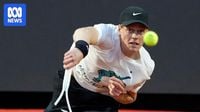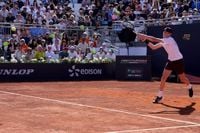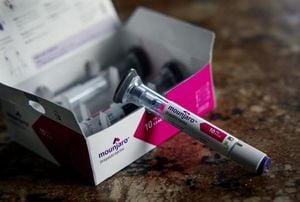World No. 1 Jannik Sinner makes his much-anticipated return to the tennis scene at the Italian Open, his home tournament, after a controversial three-month doping suspension that raised eyebrows across the sport. The 22-year-old Italian star, who has not played an official match since January, is set to open his campaign on Saturday, May 10, 2025, against either No. 99 Mariano Navone or 18-year-old Italian wild card Federico Cinà.
Sinner's return comes on the heels of a unique agreement with the World Anti-Doping Agency (WADA), which followed an appeal against a 2024 ruling by the International Tennis Integrity Agency (ITIA). The ITIA had cleared Sinner of wrongdoing, attributing his positive test for trace amounts of a banned anabolic steroid to accidental contamination. The timing of the settlement allowed Sinner to avoid missing any Grand Slam tournaments, a decision that some fellow professionals felt was too lenient.
“Some messages really surprised me,” Sinner said regarding the responses from his peers during his suspension. “And there were others I thought would reach out but didn’t. I won’t name names.” The Italian's unexpected absence from the locker room and players' lounge during his successful run to a second consecutive Australian Open title in January left him feeling uncomfortable, as he noted, “Players were looking at me differently.”
Coach Simone Vagnozzi echoed Sinner’s sentiments, stating that he and Darren Cahill, Sinner’s other coach, also sensed the glares from other players. “When something like that happens, I think it’s almost inevitable to have everyone looking at you. But there have also been some nice things said,” Vagnozzi remarked, highlighting supportive comments from the likes of Holger Rune’s mother, Casper Ruud, and Alexander Zverev.
During the final month of his ban, Sinner practiced with fellow players Jack Draper, Lorenzo Sonego, and Rune at his training base in Monaco. Initially, Sinner was prohibited from attending any sanctioned sports events, a restriction he found particularly challenging. “I wanted to support my friends in cycling or motorsport,” he said. “I couldn’t go there. That, for me, was the toughest part.”
In March, professional cyclist Giulio Ciccone shared a photo on Instagram featuring Sinner during a bike outing alongside Ferrari endurance drivers Antonio Giovinazzi and Alessandro Pier Guidi. Meanwhile, Cahill announced his intention to retire at the end of the year, raising questions about the future of Sinner’s coaching team.
Vagnozzi was asked whether he would consider coaching Sinner alone, to which he replied, “I would be able to do it on my own. But with players of this level, it’s important to have another viewpoint. And it’s important to sometimes split up the weeks you spend with the player. Otherwise, it’s a 365-day-a-year job, and that’s a bit much.”
Despite the controversy surrounding his return, Sinner enters the Italian Open with a remarkable 21-match winning streak, although he has only one title on clay out of his 19 career victories, which he achieved in Umag, Croatia, in 2022. “It’s definitely the surface where he is the least sure of himself,” Vagnozzi admitted, but he remains optimistic about Sinner’s performance, recalling a strong clay season last year when he reached the semifinals in Monte Carlo and the French Open and the quarterfinals in Madrid.
The last Italian man to win the Rome title was Adriano Panatta in 1976, a fact that adds to the pressure on Sinner as he aims to make history in his home tournament. The Italian tennis community is abuzz with anticipation, eager to see how Sinner will handle the scrutiny and expectations that come with his return.
Meanwhile, the tennis world is still grappling with the implications of doping violations and the varying degrees of punishment meted out to players. The case of Australian doubles star Max Purcell, who was banned for 18 months for receiving intravenous infusions exceeding the allowed limit, has further fueled the debate. Purcell’s ban will last until June 2026, and his situation has drawn comparisons to Sinner’s, with some questioning the consistency of the anti-doping regulations.
Purcell’s case involved a series of text messages discussing hydration sessions at a medical clinic in Bali, where he received infusions that were five times the legal limit. Despite claiming he was unaware of the violation, the ITIA found a “significant degree of fault and negligence” on his part, emphasizing that the anti-doping rules extend beyond just testing positive for prohibited substances.
John Millman, a former professional player, voiced his concerns about the fairness of the doping system, suggesting that Sinner and Purcell did not intentionally breach the rules but expressing discomfort with the disparity in their punishments. “It seems like one was quite extreme,” Millman remarked, highlighting the preferential treatment that higher-ranked players often receive.
As Sinner prepares to step back onto the court at the Foro Italico, he faces not only the challenge of competing at the highest level but also the lingering perceptions from his recent past. The Italian star has proven adept at blocking out distractions, but the scrutiny surrounding his return may prove to be a greater test than any opponent he faces on the clay.
With the French Open looming just weeks away, Sinner’s performance in Rome will be closely watched, as fans and analysts alike wonder if he can shake off the doubts and reclaim his status as one of the sport’s elite players.





